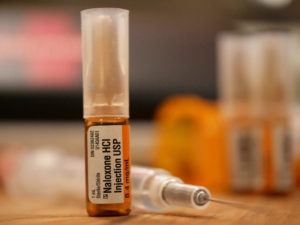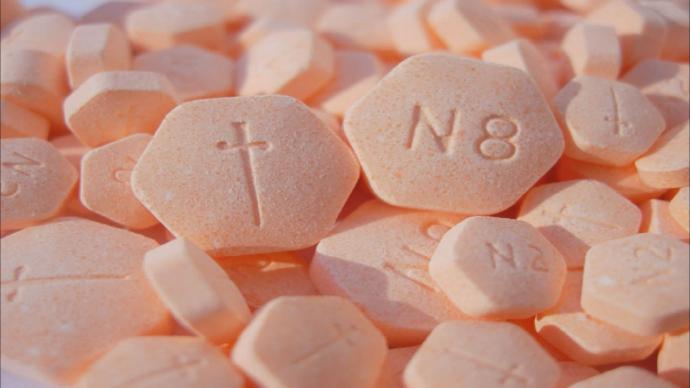The Facts About MAT: Medication-Assisted Treatment
 With the United States facing an epidemic of deaths due to opioid and other drug overdoses, the use of medication in treating substance use and addiction disorders is a growing reality.?Unfortunately, many people maintain profound concerns about introducing other, potentially dangerous substances into the mix?concerns which are usually rooted in a lack of understanding about how the process works. The rise of a number of popular myths about medication-assisted treatment has caused a significant amount of interference with the implementation of this life-saving and scientifically verified form of therapy. Here are some basic facts regarding medication-assisted treatment for drug abuse, including what it is, when it?s necessary, and what risks are involved.
With the United States facing an epidemic of deaths due to opioid and other drug overdoses, the use of medication in treating substance use and addiction disorders is a growing reality.?Unfortunately, many people maintain profound concerns about introducing other, potentially dangerous substances into the mix?concerns which are usually rooted in a lack of understanding about how the process works. The rise of a number of popular myths about medication-assisted treatment has caused a significant amount of interference with the implementation of this life-saving and scientifically verified form of therapy. Here are some basic facts regarding medication-assisted treatment for drug abuse, including what it is, when it?s necessary, and what risks are involved.
What is Medication-Assisted Treatment?
Medication-assisted treatment, or MAT, combines the use of cutting-edge behavioral therapy with medications designed to help manage the symptoms of addiction (including, but not limited to, the symptoms of withdrawal). Of critical import is the fact that the medication is very much an assist; the concept rests predominantly on the strength of other treatments, such as dialectical behavioral therapy (DBT) and counseling.
MATs which cover heroin and other opioid addiction treatments are usually referred to as opioid treatment programs, or OTPs. Opioid treatment programs will frequently employ a combination of medications, often in the form of a single proprietary mixture, such as Suboxone. These medications combine safe doses of an opioid derivative with a medication that combats the drug?s addictive properties, including pain relief. This can help to reduce the symptoms of withdrawal, making it easier for the therapeutic side of the treatment to help a client meet their psychological and emotional needs.
When is Medication Used to Treat Addiction?
 The use of medication to treat substance use disorders is not a first resort, but it has proven itself effective in a variety of cases which could not be resolved through purely psychiatric therapies. An exhaustive database of checklists and resources is available to certified MAT and OTP providers. Among other things, it provides information on when to consider medication-assisted treatment, what to expect by way of results, probable timetables, how to manage unexpected but non-threatening results, and when to discontinue treatment due to potential risks.
The use of medication to treat substance use disorders is not a first resort, but it has proven itself effective in a variety of cases which could not be resolved through purely psychiatric therapies. An exhaustive database of checklists and resources is available to certified MAT and OTP providers. Among other things, it provides information on when to consider medication-assisted treatment, what to expect by way of results, probable timetables, how to manage unexpected but non-threatening results, and when to discontinue treatment due to potential risks.
In broad terms, the protocol for using MAT requires that an individual be diagnosed as having a substance use or addiction disorder, typically without a co-occurring mental health concern. The presence of a co-occurring disorder (formerly ?dual diagnosis?) is not guaranteed to disqualify a potential candidate, but many medications commonly employed to treat the most common co-occurring mental health concerns would present a high risk of adverse drug interaction with MAT medications. A client should also, prior to their being placed on medication, be well-educated in alternative options, and they must agree to follow all instructions regarding proper use of the medication. Individuals with a history of misusing prescription medications are not normally offered medication-assisted therapy.
Finally, a client should be in overall good health before being offered MAT. In particular, they cannot have any of the commonly associated medical conditions which might be exacerbated through the use of those medications which are available to those individuals with their particular substance addiction. These range from diabetes, hypertension and chronic obstructive pulmonary disease, to temporary infections, and include traumatic injuries (such as gunshot wounds, or injuries inflicted by a sharp object). The use of MAT medications can make pain management for such conditions extremely difficult, and their presence may require that other avenues of treatment be pursued.
What Types of Medication are Used in MAT?
There are a wide range of possible medications which are currently approved by the FDA to treat drug addiction. Broadly speaking, they may be divided into two types: those which treat addiction to alcohol, and those which treat addiction to opioids. Other types of controlled substances, including methamphetamines, cocaine and their derivatives, currently have no FDA-approved MAT alternatives.
West Coast Recovery Centers strictly adheres to SAMHSA guidelines on medication-assisted treatment. Clients are thoroughly educated regarding the diverse array of alternative therapies WCRC has available. Where MAT is felt to be the appropriate route to take, to best accommodate the personal needs of a client, West Coast RC relies predominantly on the following medications. Each has been subjected to intensive, double-blind scientific studies, and has been found to be both safe and effective, provided its use is properly managed and supervised.
- Vivitrol is an opioid addiction medication, which is delivered in the form of an injection. It is non-addictive, and may be administered on a monthly basis over the course of treatment. Side effects from Vivitrol include the possibility of an overdose if opioid use continues at pre-medication levels, as well as the possibility of an allergic reaction at the site of injection. Vivitrol is a broadly effective medication, and may be used to treat a variety of opioid addictions.
- Narcan (Naloxone) is an opioid antidote, which may be administered to an overdosing individual by a trained individual to halt the progress of their overdose. In California, generic naloxone is also available directly to addicts for emergency use, and may be dispensed by pharmacists without a prescription. It is most commonly given in the form of an injection, although a variation?administered via nasal spray?does exist. Narcan normally takes effect within five minutes, and is usually broken down within the system after approximately 1.5 hours. Allergic reactions, though rare, may occur: they include hives, difficulty breathing, and swelling of the face, neck or throat. More common, less acute side effects include fever, nausea, goosebumps, tremors, and a spike in heart rate and blood pressure.
- Subutex (Buprenorphine) is an opioid dependency medication made available in the form of a sublingual tablet, or lozenge; it is held under the tongue until it dissolves. Subutex is administered after clear signs of moderate to severe withdrawal symptoms occur, barring any considerations which would specifically invalidate its use for a given individual. Subutex is not preferred as an unsupervised or maintenance medication, with Suboxone being the preferred treatment after the induction phase (typically the first 2-3 doses).
- Suboxone is an opioid dependency medication which combines buprenorphine and naloxone. It is taken as a sublingual lozenge, and is the preferred medication for ongoing medication-assisted therapy. It is frequently dispensed following a client?s introduction to MAT via Subutex, with Suboxone being introduced in place of Subutex on the third or fourth day of treatment. The most common side effects of Suboxone include headaches, nausea, and other digestive issues. On occasion, the symptoms of opioid withdrawal may manifest in response to Suboxone use, in which case a client may (depending upon a variety of factors) be kept on a controlled dose of Subutex instead.
- Naltrexone is a medication that is most commonly used to treat opioid dependency, although it may also be used to treat dependency on alcohol. In either case, MAT standards apply, including the use of compliance counseling and other addiction recovery therapies. Naltrexone is an opiate antagonist: it works within the brain to counteract the effects of taking opioids, such as feelings of well-being and pain relief; in the process, it reduces the body?s opioid dependency. Naltrexone is taken orally; it may be taken with or without food, and may be taken safely with antacids if it leads to stomach upset. It does not need to be taken at the same time each day, though doing so as part of a routine is often helpful, particularly with supervised dosage levels.
For More Information
Medication-assisted treatment is not a first recourse. While it has proven to be highly effective in many cases, it is not without its risks. The National Council for Behavioral Health offers a comprehensive and easy-to-understand reference guide, with more information about MAT for individuals and families suffering from the affliction of substance addiction.




